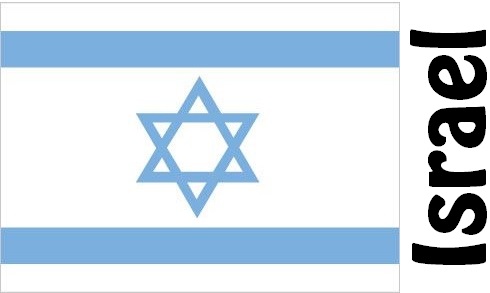Israel Facts
Israel, Middle East State; 20,770 km², 8.9 million residents (2019).Israel was established in 1948 in parts of the former British mandate Palestine on the south-eastern Mediterranean coast. Israel borders in the north to Lebanon, in the northeast to Syria, in the east to Jordan, in the south to the Gulf of Aqaba and in the west to Egypt and to the west coast to the Mediterranean. Jerusalem was designated the capital of Israel in 1949, but only the United States has confirmed that status.

Country facts
- Medinat Yisraūel / State of Israel
- Country abbreviation: IL
- Area: 20 770 km²
- Population (2019): 8.9 million residents
- Capital: Jerusalem (not internationally recognized)
- Main languages: Hebrew, Arabic
- State: Republic
- Head of State: Reuven Rivlin (President)
- Head of Government: Benjamin Netanyahu
- Per capita GDP (2018): US $ 41,614
- GNI per capita (2018): US $ 40,850
- Currency unit: 1 shekel = 100 agorot
- Currency code: ILS
- Country Dialing (Telephony): 972
- Internet domain name: il
- Time difference compared to Sweden: +1
- National Day: yearly change in the period from mid-April to mid-May (Independence Day, 1948)
Nature
- Land use: forest (6%), agricultural land (21%), other (73%)
- Highest mountain: Meron (1,208 m above sea level)
Population
- Population density (2019): 428 residents per km²
- Natural population growth (2019): 1.6%; birth number 21 ‰, death number 5 ‰
- Age structure (2019): 0-14 years (28%), 15-64 (61%), 65- (11%)
- Average life expectancy (2019): men 81 years, women 85 years
- Infant mortality (2019): 3 per 1,000 live births
- Population forecast 2050: 13 million residents
- HDI (2017): 0.903 (place 22 of 189)
- Urbanization rate (2019): 91%
- Most populous cities (2017): Jerusalem (882,600 residents), Tel Aviv (438,800), Haifa (279,600)
Business
- Industry’s contribution to GDP (2017): agriculture (2%), industry (27%), service (71%)
- Exports (2017): US $ 58,670 million
- Main export products: machines, software, gemstones, agricultural products
- Main exporting countries: USA, UK, China
- Imports (2017): US $ 68 610 million
- Main import products: raw materials, military equipment, gemstones
- Main importing countries: USA, China, Switzerland
- Railway network (2014): 1 250 km
Israel’s coastal plain on the Mediterranean is straight with dunes and sandstone ridges. Inside, a hill and mountain landscape that extends in the north-south direction up to the Jordan Valley. This forms a long, deep and narrow fault lowering. In southern Israel, the Negev desert area is expanding.
At its formation in 1948, the country received no written constitution, essentially due to disagreement about the role religion would play in the new, Jewish, state. However, a number of so-called constitutions have been established. The President is elected by Parliament for a seven-year term. His tasks are essentially representative. Political power is instead rooted in Parliament, the Knesset. It is a single-chamber assembly, elected in direct general elections every four years.
Despite war and lack of water and natural resources, Israel is the Middle East’s most industrialized country. The past so dominant agriculture has in recent decades declined in importance, and its role as a base in the economy has been replaced by high-tech industry. The country has extensive military and financial support from the United States.
Israel Map














































